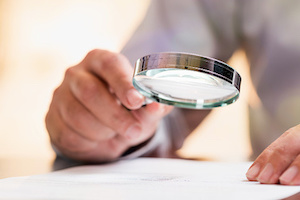back to 2024.06.01 George Wyth POTA
6 conclusions
6 conclusions:

Two solar frames ended up being just about exactly what was needed for the day. The panels were flat on the
ground all day, since the event ran from morning to afternoon. The frames themselves weren't really needed,
although they did make it easier to move the array to keep it out of the shade as it got later in the day.
Due to the heavy and high tree canopy all around the shelter there wasn't anywhere to lean the panels against
anyway.
I brought the heavier 4lb panels again for this event, and I noticed that the cables from their diode boxes
are longer than the lighter 2lb panels, making it possible to attach all four panels to a single combiner box
without needing a jumper for one of the panels, which is handy.
One of the radios was suffering a pretty severe voltage drop during transmit, and I noticed it was connected
to my battery with 50ft of #10 CCA. I replaced that with a shorter run of #10 (probably more like #9) copper
and that improved the drop (which was going from 14.2 down to 11.6) to a much better low of 13.8 volts. It's
cheaper, and I like to use it for short jumps, but the only place it can be used for a long run is to bring in
power from the panels where the voltage is high and the current is low.
There was some interference between stations, but after trying a bandpass filter and a few DC line filters, we
determined it was just a problem of the antennas being too close. (40 feet or so?)
The one guest radio had an antenna issue when an antenna wire pulled out of a crimped connector. I didn't bring
my soldering iron today, so we had to make do with a bit more primitive repair involving disassembling, un-
crimping the connector, and re-assembling it. Crimp if you like, but follow it up with solder to improve the
mechanical reliability of the connection. I've got that USB-C soldering iron I'm not using, I should put that
in with some part of the solar gear to make sure it's always available for events like this.
We didn't do any grilling or other food prep today. One person brought some cookies and I brought some water,
but nothing was really in demand in the way of food or drink. The mosquitoes, on the other hand, were in great
supply, and everyone was a bit tortured by the little flying vampires. It wouldn't have been so bad if there
had been even a little breeze, but there just wasn't enough air movement to shoo them away. I've had thoughts
of using a large-bladed, slow-rpm fan at field day events for both cooling and mosquito control, though fans
like that are hard to come by, bulky, heavy, run on 120vac, and are expensive, so my interest is pretty low.
The shelter had no electricity, and so no indoor lights. Normally this isn't really a problem for daytime ops,
but as mentioned, this shelter was surrounded by a pretty dense tree canopy, which made it get surprisingly dim
inside. If it had been any darker I think we'd have needed some additional lighting.
The guest radio used stud-connectors (U-shaped bolt-down) which can't really be connected to powerpoles, but I
had powerpole-to-alligator adapters handy and so his radio was able to get good power without much difficulty.
I encouraged him to look into converting his gear to use powerpoles, to improve inter-operability.
I got out my IR adapter for my phone and got some good pictures of the solar panels while operating. I wanted
to see if there were any "hot spots", though wasn't really expecting to see anything unusual on these panels
since they're protected by a pretty thick coating of epoxy. (which is also why they weigh twice as much)
I initially set up the power grid such that the radios were getting their power from the Load port on the solar
controller, through a noise filter. This meant that heavy draws like from Dave's CW rig were drawing a lot of
current (over 20 amps) from the battery through the filter. I later rearranged things so that the radios were
connected directly to the battery and that the battery was connected to the controller's Battery port via the
filter. The solar controller was only sending an average of 2-3 amps (10 peak) to the battery, which cooled
down the filter considerably. I took a few IR pictures of the power station including the filter, and you can
clearly see how it's warming up under load.
I never ended up doing my solar presentation. Bill wasn't here today - I'm guessing he was planning to be
available on the original date but wasn't available today. Either way, we really didn't have a big enough
audience to justify a presentation. I did get to discuss solar with several people though, and answer some
questions. There's a lot that can be learned about solar by watching YouTube videos, but given the variety of
applications, it's always going to leave people with questions that aren't addressed in the videos. So it's
handy to have someone available to answer specific questions.
last updated 06/04/2024 at 11:52:32 by make_www_index.command version 2024.05.25.A
